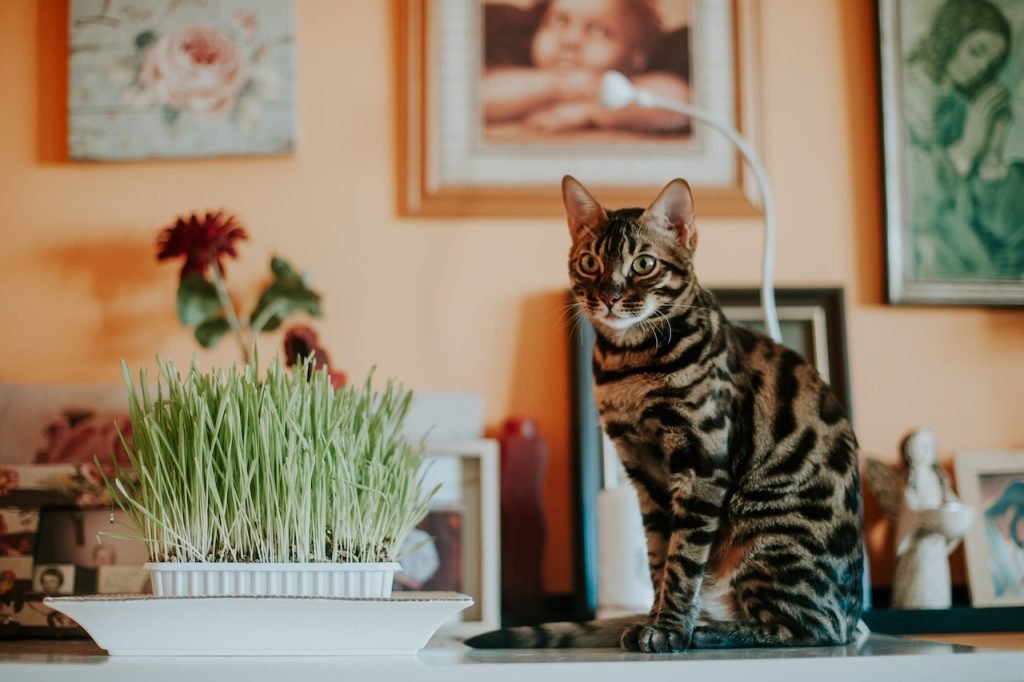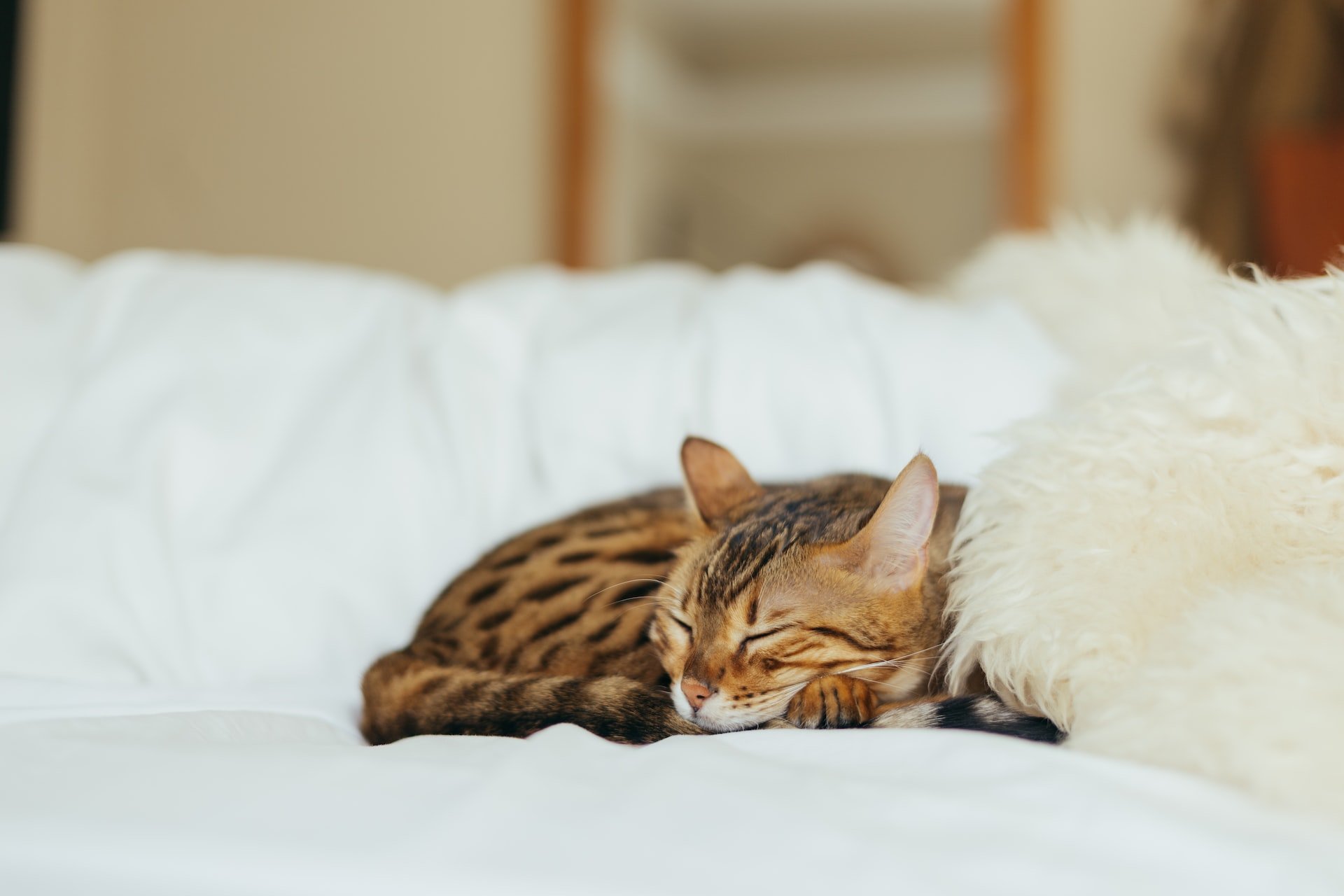Bengal cats have wild, playful, and adventurous hearts. They are gregarious, sociable, and adore interacting with their owners. They are also extraordinarily clever and adept at picking up new skills. They do, however, have a few typical health risks that you should be aware of, just like every breed.
All cat breeds are genetically predisposed to specific health issues, but some more so than others. Although they are at an increased risk, this does not necessarily guarantee that the cat you have will contract the disease or diseases. Different breeds are predisposed to different ailments, so we’ll focus on the ones that affect your Bengal cat.
What Are the Most Common Common Health Problems in Bengal Cats?

Progressive Retinal Atrophy (PRA)
A serious illness called Progressive Retinal Atrophy (PRA) gradually impairs your cat’s vision until it renders them entirely blind. Typically, it begins around the age of two, when the cat you own is an adult. It happens when your cat’s retina’s photoreceptor cells begin to deteriorate.
Another type of this problem is retinal dysplasia, which occurs when they are still kittens. This type can be discovered as early as two months of age.
The first sign that something is wrong with your cat in PRA will be a decline in night vision. Since this ailment doesn’t create pain, it’s possible that you won’t become aware of anything being wrong until it’s already pretty severe.
Take your cat to the doctor for a fundus examination if it exhibits any of the following behaviors: avoids dark areas out of fear, bumps into things, or has slightly dilated pupils. Unfortunately, there is no cure for this disease.
Cataracts
Cataracts are more frequent in humans and dogs, but regrettably, they can also impair the Bengal breed. Fortunately, cataracts can usually be removed surgically, but if they are not, your cat will eventually lose the ability to see out of one or both eyes.
The normal lens of the eye becomes hazy as a result of cataracts. Clarity of vision is reduced or lost entirely because it stops light from focusing on the retina.
Most cats with diabetes have it. Other conditions that can contribute to it include trauma, uveitis, hypocalcemia, diabetes mellitus, and old age.
If you examine your cat’s eye closely, you might be able to spot a cataract. Take your cat to the doctor right away if you spot it or if you see them having trouble seeing.
Patellar Luxation

Patellar luxation is primarily a result of genetics and is brought on by physical anomalies in cats that commonly afflict both of their hind legs. However, injury to the knee may be to blame.
The most likely cause of abrupt onset is trauma, but if symptoms worsen over time, it is hereditary. Fortunately, it is uncommon in most cat breeds, but the Bengal breed is particularly vulnerable.
When the kneecap slips out of the trochlear groove and moves either within or outside of it, the condition that it causes damages the kneecap. A painful side effect of the rubbing is arthritis.
Your Bengal cat may have patellar luxation and needs to see the doctor if it limps, struggles to leap, or attempts to avoid putting weight on the affected leg or legs. Treatment options range from medicine to surgery, depending on the severity.
Hypertrophic Cardiomyopathy (HCM)
Numerous cat breeds, especially the Bengal variety, are susceptible to hypertrophic cardiomyopathy (HCM). The left ventricle of the heart’s wall swells in most cases due to a hereditary disease, which reduces blood flow.
The likelihood of this illness, which often manifests between the ages of 5 and 7, is higher in male cats. Other diseases, such as high blood pressure and hyperthyroidism, might exacerbate your cat’s health problem, making it more difficult to control. Unusual cardiac rhythms, anorexia, a weak pulse, sudden limb paralysis, collapse, and sudden heart failure are a few signs.
Chronic Renal Failure (CRF)
Numerous conditions, including diabetes mellitus, kidney disease, a blockage of the urinary tract, some prescription drugs, and genetic factors, can result in chronic renal failure (CRF). Usually affecting elderly cats, this illness develops when a cat’s kidneys begin to fail.
Once a cat receives medical attention for this health problem, the condition should slow down and the cat’s life should be prolonged. But there is no treatment, and eventually, cats pass away from it. Anorexia, vomiting, diarrhea, excessive thirst, seizures, and blood in the urine call for immediate medical attention.
Gastritis
The stomachs of Bengal cats are quite sensitive and prone to distress. Inflammation can be brought on by minor things like choosing the wrong foods to consume or serious illnesses like kidney disease. In either case, your cat has to be examined by a veterinarian for a proper diagnosis and treatment if their stomach has been ill for more than 24 hours.
Gastritis is an inflammatory disorder that affects the stomach lining in cats, however, it often lasts for no more than a day. There may be prolonged bouts, which is often a sign of a more serious medical condition. Vomiting and loss of appetite are typical signs of gastritis.
Lymphoma

Lymphoma, the most prevalent malignancy in Bengal cats, attacks the lymphatic system. Although it can be found in many places of the body, it is most commonly found in the intestines, where it causes weight loss, changes in appetite, diarrhea, and vomiting.
The appearance of lymphoma and inflammatory bowel disease is so similar that it is easy to mistake one for the other without an ultrasound or biopsy.
A cat’s intestinal lymphoma may develop slowly or rapidly depending on its form. The chance of survival is higher for the slower type. Like with most illnesses, your cat’s probability of survival increases with the speed at which it is diagnosed and treated.
Pancreatitis
Pancreatitis is a disorder in which the pancreas gets inflamed. Unfortunately, this disease might return multiple times. Dehydration, loss of appetite, weight loss, lethargic behavior, and an increase in thirst and urine are all symptoms that your cat may be experiencing this health issue.
If your cat has a mild form of pancreatitis, you may not notice any signs at all. Serious cases frequently necessitate hospitalization, although many cats who get medical care recover completely. Pancreatitis often has an unknown cause.
Feline Lower Urinary Tract Disease (FLUTD)
The inflammation of the urinary bladder is a symptom of feline lower urinary tract disease (FLUTD), another disorder that doesn’t always have a known cause. The condition is greatly influenced by stress, but other risk factors include lack of physical activity, obesity, advanced age, dehydration, and an earlier diagnosis of chronic renal disease or surgeries on the urinary system.
Because of the discomfort caused by this illness, your cat may cry when urinating or lick their genital region. Additionally, if they begin to urinate outside of the litter box, you’ll know that their house training has lapsed.
They will also have red or black urine. There is a substantial likelihood of recurrence if your cat previously had FLUTD. No matter how many times a cat develops this ailment, it must be examined and cared for by a veterinarian.
Conclusion
Although the conditions on the list above are those that Bengal cats frequently experience, other cat breeds may also be at risk. However, just because a cat’s breed is prone to a condition doesn’t mean your cat will also have it.
Make sure your Bengal cat eats well and gets plenty of activity to stay healthy. Avoid feeding them anything that can irritate their stomachs, and take them for regular checkups at the vet.
Looking for an award-winning, reputable, and responsible Bengal Cat Breeder in the Dallas – Fort Worth Texas Area? Visit Lone Star Bengals today and find the perfect Benga cat for you!

